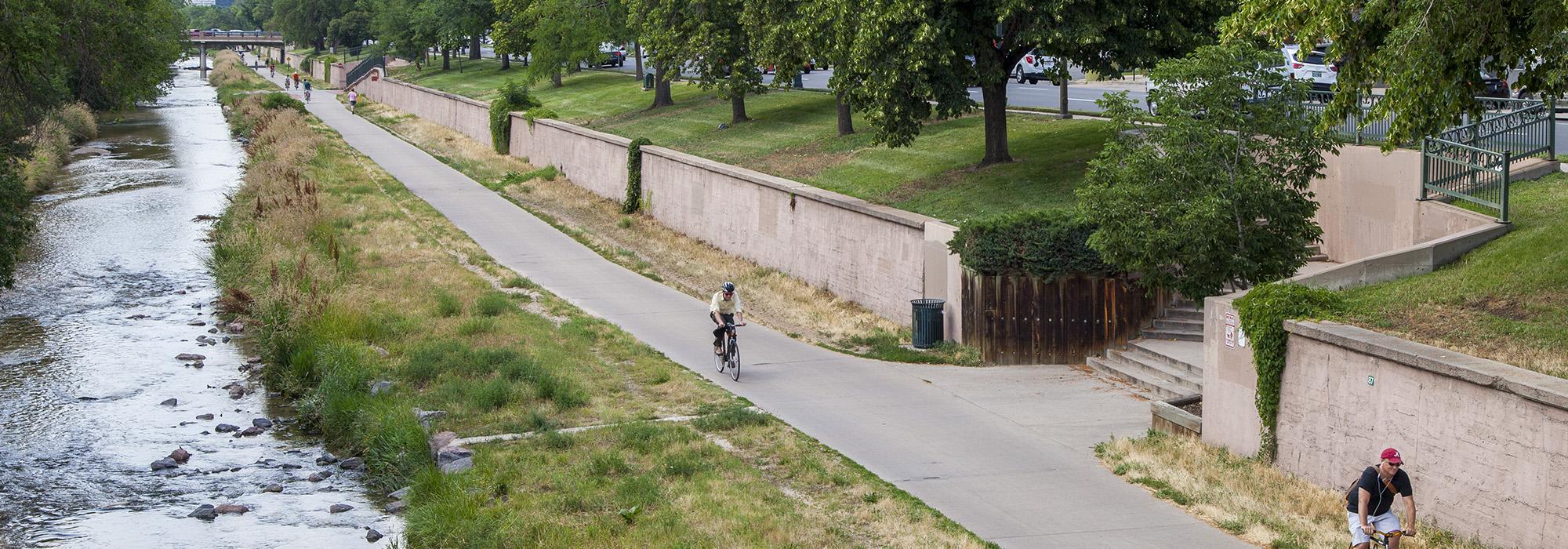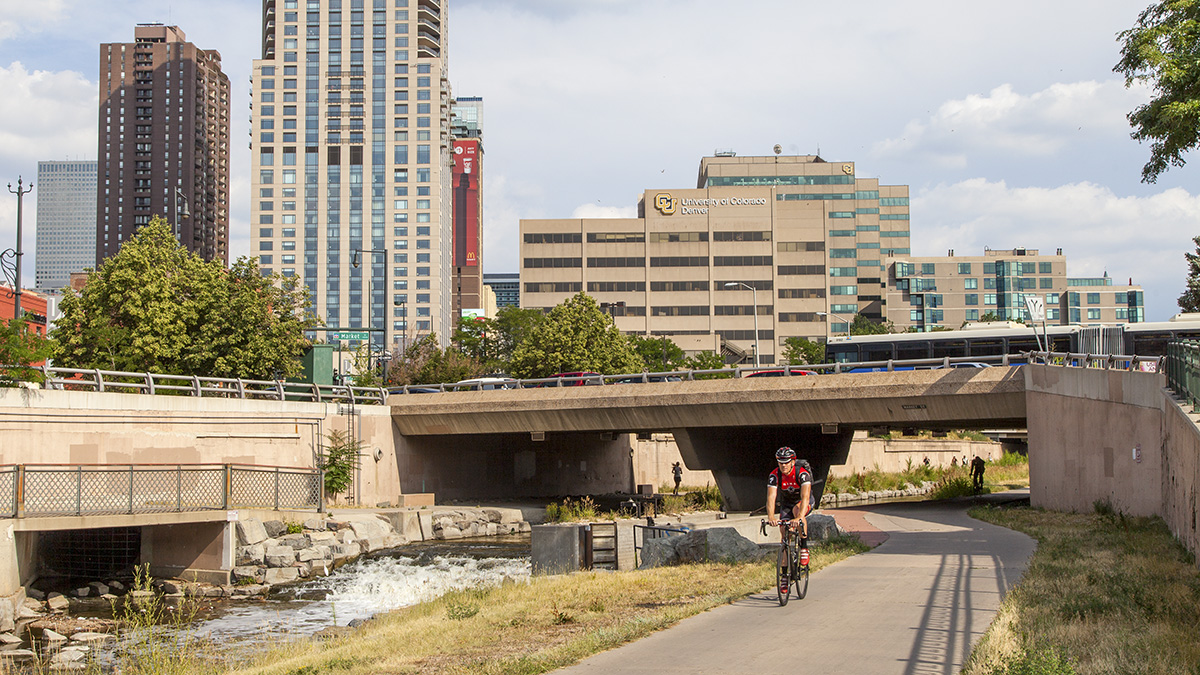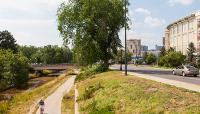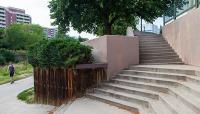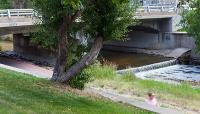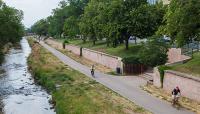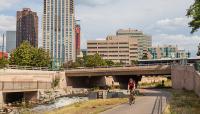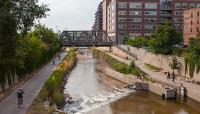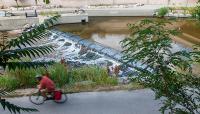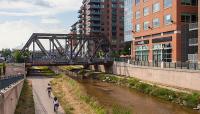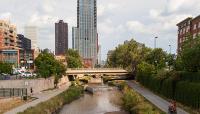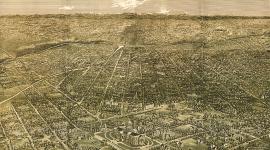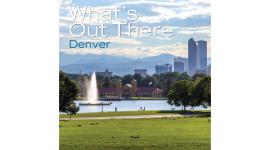Landscape Information
Tracing the course of Cherry Creek and running diagonal to the urban grid, this one-mile section of the boulevard between West Colfax Avenue and Downing Street was completed in stages between 1906 and 1918. Laid out as part of his larger plan for Denver’s City Beautiful parkway system, George Kessler called for the removal of shanties and industrial ruins along the creek and the stabilization of its embankment.
Framing views of the Rocky Mountains, the boulevard included many features to enhance the pedestrian experience including a planted median between the creek and sidewalk, regularly-spaced lampposts (originally selected by the Denver Art Commission), and spillways into the creek manifesting in summertime waterfalls and winter ice skating. In 1912 several small, triangular parks were designed at cross street intersections with Speer Boulevard. Following Kessler, City landscape architect S.R. DeBoer, developed an extensive plant palette that simultaneously screened undesirable views and created a tree-lined drive. Elms, oaks, and poplars were used for the canopy while the understory was comprised of juniper, spruce, and crabapples.
By the mid-1950s Speer Boulevard had been widened to accommodate transportation needs. Traveling one-way to the northwest on the north side of the creek and the opposite direction on the south, the formerly tree-lined drive was showing its age. In 1989 City of Denver historians and landscape architects renewed the boulevard’s City Beautiful character with noise and traffic abatement strategies, new tree plantings, and the reintroduction of historic street furniture and lighting. Grade-separated paths were installed for bicyclists and pedestrians. The Denver Park and Parkway System, including Speer Boulevard was listed on the National Register of Historic Places in 1986.



